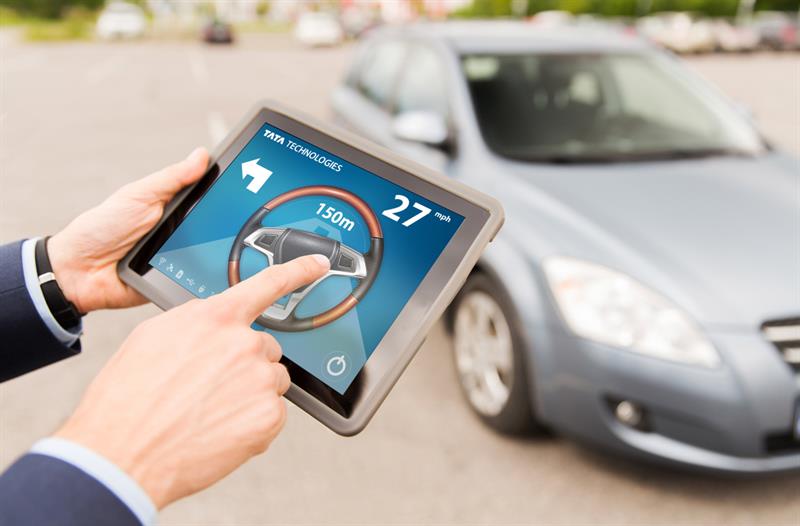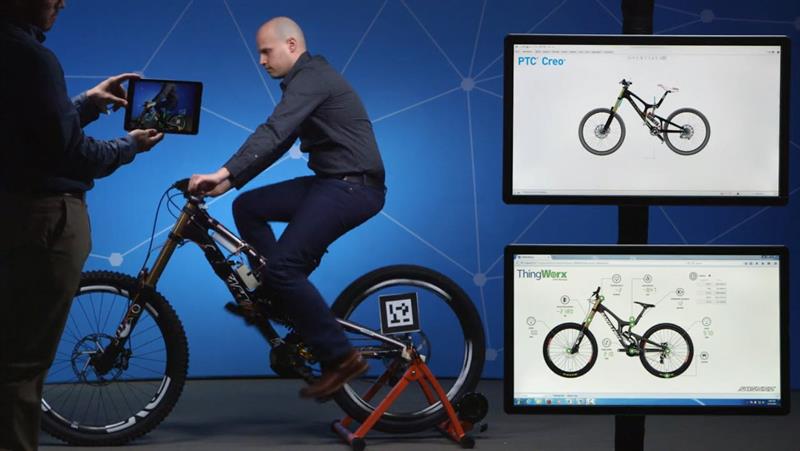The impact of the digital revolution on product development has been exponential in the last 25 years. Today, tools are capable of simulating products accurately and without considerable cost. Cloud technology has meant businesses and manufacturers of all sizes are able to create virtualisations of products without having to buy serious infrastructure.
As we continue to increase computing power and connectivity we are able to build a ‘digital twin’ that is a complete virtualisation that lives and evolves as physical products live and evolve. It is a concept of physical and virtual objects co-existing in the world, connected by networks, communicating between one another allowing and enabling seamless streams of information to be shared, controlled and passed between the two models.
The concept of a digital twin requires sensors and components to provide real time data for multiple inputs. The fusion of technology, fast networks and significant computing power enables such information to be processed and acted upon. The more computing power that is used, the more real-time the interaction. So with more ubiquitous computing power comes more applications, processes, diagnostics that will further enhance, evolve and expand the concept.
In some cases the physical model is created completely from the digital model, for example a car. Aspects of the digital data are then used throughout the life of that vehicle until the end of both the physical and virtual products. Therefore the digital model lives in parallel alongside the physical model. As the physical or virtual model evolves the changes are passed onto its opposite number.
The benefits and advantages of the digital twin are numerous to both the manufacturer and the consumer. For the manufacturer, having a digital twin of the whole production system has the potential to significantly enhance cost efficiency and productivity.
By equipping a factory with completely virtualised assembly lines and materials, manufacturers are able to collect data reflecting and measuring their operating systems, which allows the optimisation of labour while developing the most proficient prototypes for cutting. Once outside the factory, the digital twin will allow the manufacturer to monitor the real time performance data of a product to support the research and development of future models as well as understand and foresee the existing product’s maintenance problems.
For the consumer, the advantages of the digital twin are centred on the ability to give the user more control and interactions with the product. The development of a digital twin ensures that the consumer doesn’t need to be within the physical space of the product to interact with it, as they can have control in the virtual space.

For example, Tata Technologies is helping one of its global automotive clients to gain a competitive industry advantage through the digital twin concept. New models enable its drivers to start their car and turn on its heating on a cold morning from their phones in the comfort of their own kitchen while having a cup of tea.
The ability to interact and control products, such as the car, is just the start of the potential impact of the digital twin concept. Digitalisation can be used to control transport infrastructure and even the running of an entire city.
Virtual Singapore, a £36 million research and development programme that was launched in December 2014, aims to create a digital ‘master model’ to contextualise the big data collected by the ‘smart city’ in order to better evaluate the impact of processes such as traffic optimisation, planning infrastructure development or risk management.
The initiative will create a common platform to allow a deeper collaboration between citizens, government, businesses and public infrastructure. Closer to home, digitalisation must play a prominent role in the UK Government’s Northern Powerhouse strategy, as a smart and connected region is integral to creating a stronger and greener, more sustainable local economy.
However, trust remains a major constraint to the growth of the digital twin concept. A cultural change is needed if decision makers are to embrace the role and importance of the virtual space. It should not be underestimated what smart phones have already achieved in helping society to understand and trust the ability of technology to intuitively improve everyday life.
However, much more needs to be done at a commercial level. It is the role of industry specialists, such as Tata Technologies, to educate and reassure manufacturers about the advantages and the benefits of developing and utilising a digital twin, as well as ensure that digitalisation is as vertically integrated throughout a product’s supply chain as possible.
As trust and education continue to advance, the next exciting development will be complete collaboration in the control of the virtual and physical spaces. Having a single entity controlling both worlds will help to remove all duplicity – the holy grail of product development. However, there is likely to be a battle around who gains this control. In the automotive sector, as Google and Apple seek to establish their presence in the industry through the self-driving car, German manufacturers Audi, BMW and Mercedes have acquired Nokia’s navigation system, HERE Maps, to gain back control of their information systems.
The best way to manage this evolution may well be through regulations and licensing rather than propriety development. However, it is clear that manufacturers will not want to lose access to the information that a digital twin provides as they increasingly embrace the role of digital telepathy.
Author bio:
Phil Botley is technical manager, ICEM Products, at TATA Technologies
Two worlds collide
Physical products are about to get a digital doppelganger that is going to follow them around. The concept might sound a bit abstract, but many feel this is a natural evolution as more smart connected devices come to market. Justin Cunningham finds out more. The ‘Digital Twin’ concept is one that is being explored by various CAD companies and their supporting industrial partners. The basic premise is the same, create a digital companion for the physical product that is continuously updated with real world data, gathered by sensors on the product that are connected to the internet. It is a continuation and sub-group that comes under the general banner of the Internet of Things, and brings in elements of augmented reality that blend both the physical and digital worlds. ‘Things’, or products as non-marketing people might say, are increasingly becoming connected. Nest and Hive are ‘smart’ thermostats, JLR are building apps that allow its cars to be controlled by phones, and a host of technology start ups are targeting anything and everything. There are heavyweights involved ready to provide the hardware, systems and software including General Electric, National Instruments, and PTC. Many are keen to leverage the technology to improve design, manufacture, servicing, or indeed all of the above by developing ‘digital twins’. PTC has been increasingly keen to develop its software products to enable engineers to integrate the connectivity and sensors needed to make them smart. CEO Jim Heppelmann explained the strategy. “We really don’t learn much about what is the customers’ experience,” he said. “How does our design operate, what bits do users like or not use? We have had very little feedback traditionally once products leave the factory. In most cases, you don’t know anything about how your product is actually being used or how it is working, unless a customer calls you when there is a problem. “The digital data and information in CAD designs, historically, only flows in one direction, from the engineer, to the factory, to the customer. It is a lifecycle that flows from digital to physical but it doesn’t flow back. There is a brick wall that separates the world of digital and physical. These worlds are distinct and separate.” But, ‘things’ are changing this. PTC has made a series of acquisitions in the last 24 months to the tune of $600 million to build a new product portfolio that reflects this change to product design and functionality. “We are going to help our customer build the next generation of transformative products,” said Heppelmann. “This new reality is part physical and part digital all at the same time, it is a new experience, and is the yin and yang of these worlds coming together. We are going through the biggest metamorphosis we have seen in decades.” This evolution means that while the physical and digital aspects of a product remain distinct, they will be inseparable. It means that everything that is learnt from the physical world can be brought in to the physical world, and vice versa. To demonstrate this notion, PTC has taken a traditionally simple, non-smart or connected product, the humble push bike, and made it a digital twin. Mike Campbell, heading up PTC’s new Digital Twin group, explained: “This is a great example of a mechanical design, that we have retrofitted with Intelligence. Seven sensors and connectivity allow us to monitor and measure different attributes of the bike, tracking things like the wheel speed, angle of the handle bars and compression of the suspension.” The sensors feed in to a National Instruments MyRio to collect the data and provide the connectivity to stream it up to the cloud. Thingworx, acquired by PTC in 2014, can then be used to create a ‘dashboard’ to tell designers and engineers about the bike. From anywhere in the world, engineers can see what is going on with a real product. The digital twin will bring together PLM, IoT and CAD all at the same time. Data can be streamed off the bike and present it on its digital twin. The model is no longer a virtual prototype or idealised model, it’s an exact replica of what is actually happening to the bike in virtual real time. It’s possible that the information could be gathered for 1000s of bikes so engineers can see what the failure modes are, how components age and how that effects different components, and if the design assumptions are accurate or not. “There are hundreds of applications here for service to sales,” concluded Heppelmann. “It is a powerful idea. You can capture a trail file and then replay that scenario against future integration of the design.” |












